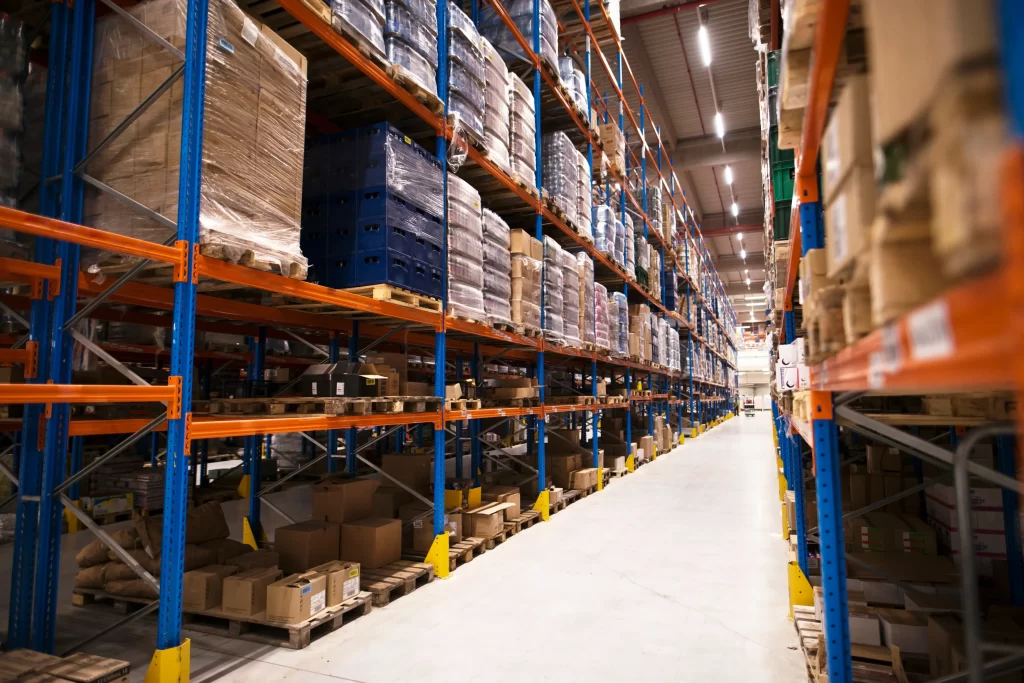Warehousing has become an essential part of the supply chain, affecting everything from inventory management to customer satisfaction. Whether you’re a small business owner or a curious consumer, understanding the essentials of selecting and maintaining warehouse equipment is crucial. This comprehensive guide will walk you through the process, ensuring you can make informed decisions and keep operations running smoothly.
Why Warehouse Equipment Matters
Warehouse equipment isn’t just about storage; it’s the backbone of efficient operations. Imagine a warehouse without the right shelving or forklifts—chaotic and inefficient. Proper equipment ensures that goods are stored safely, easily accessible, and efficiently moved around the warehouse.
The Basics of Warehouse Equipment
Before we get into selection and maintenance, let’s cover some basics. Warehouse equipment generally falls into three categories:
- Storage Equipment: Shelves, racks, and bins.
- Material Handling Equipment: Forklifts, pallet jacks, and conveyors.
- Safety Equipment: Guardrails, safety nets, and protective gear.
Understanding these categories will help you grasp why each type plays a critical role in warehouse operations.
Selecting the Right Storage Equipment
Choosing the right storage equipment is key to optimizing space and efficiency. Here are some tips to consider:
Know Your Inventory
The first step in selecting storage equipment is understanding your inventory. Are you storing small items like screws or larger items like furniture? Knowing what you store will determine the type of shelving or racks you need.
Consider Durability
Warehouse equipment is a long-term investment. Opt for durable materials that can withstand the weight and wear of your goods. Steel pallets, for example, are more durable than plastic ones, especially for heavy items.
Evaluate Space Constraints
Space is often limited in warehouses, making it essential to choose equipment that maximizes available space. Consider vertical storage solutions and adjustable shelving to make the most of every square foot.
Essential Material Handling Equipment
Material handling equipment makes it easier to move goods within the warehouse, thus improving efficiency and safety. Here’s what you need to know:
Forklifts
Forklifts are indispensable in any warehouse setting. They come in various types, including electric, gas-powered, and manual. Select one based on your needs and budget.
Pallet Jacks
For smaller warehouses or less frequent heavy lifting, pallet jacks are a cost-effective alternative to forklifts. They are easy to operate and maintain.
Conveyors
Conveyors automate the movement of goods, making them ideal for high-volume warehouses. They reduce the need for manual labor and speed up the process of moving items from one location to another.
The Role of Safety Equipment
Safety should never be compromised. Proper safety equipment protects both your employees and your inventory.
Guardrails
Guardrails help prevent accidents by clearly defining areas where employees can and cannot go. They protect both workers and equipment from damage.
Safety Nets
Safety nets are crucial for preventing items from falling off shelves or racks. They are especially important in high-storage areas where falling objects pose a significant risk.
Protective Gear
Ensure that all employees wear appropriate protective gear, including helmets, gloves, and safety shoes. This not only complies with safety regulations but also minimizes the risk of workplace injuries.

Maintenance Strategies for Warehouse Equipment
Once you’ve selected your equipment, maintaining it is crucial for long-term efficiency and safety.
Regular Inspections
Conduct regular inspections to identify any wear and tear. This includes checking shelves for rust, forklifts for mechanical issues, and safety nets for tears.
Scheduled Servicing
Like any other machinery, forklifts and conveyors require regular servicing. Set up a maintenance schedule to ensure they are always in top condition.
Employee Training
Ensure that all employees are trained in the proper use and maintenance of warehouse equipment. This reduces the likelihood of misuse and extends the lifespan of your equipment.
Benefits of Proper Equipment and Maintenance
Investing in the right equipment and maintaining it properly offers several benefits.
Increased Efficiency
Proper equipment and maintenance streamline operations, making tasks quicker and easier to complete.
Enhanced Safety
Following safety protocols and using appropriate equipment minimizes the risk of accidents, ensuring a safer work environment.
Cost Savings
Though the initial investment might be high, proper maintenance reduces the need for costly repairs and replacements in the long run.
Common Mistakes to Avoid
Even with the best intentions, mistakes can happen. Here are some common pitfalls to watch out for.
Overloading Shelves
Avoid overloading shelves beyond their capacity. This can lead to structural failure and pose a safety risk.
Ignoring Manufacturer Guidelines
Always follow the manufacturer’s guidelines for equipment use and maintenance. Ignoring these can void warranties and lead to equipment failure.
Skipping Safety Checks
Never skip safety checks. Regular inspections and adherence to safety protocols are essential for maintaining a secure warehouse environment.
Future Trends in Warehouse Equipment
With technological advancements, the warehouse equipment landscape is constantly evolving.
Automation
Automation is the future of warehousing. Robotics and AI are being increasingly integrated into warehouse operations to improve efficiency and accuracy.
Sustainable Practices
Sustainability is becoming a key focus. Eco-friendly materials and energy-efficient equipment are gaining popularity, helping businesses reduce their carbon footprint.
Smart Technology
Smart technology, including IoT devices and sensors, is being used to monitor equipment in real-time. This enables predictive maintenance, reducing downtime and improving efficiency.

Conclusion
Selecting and maintaining warehouse equipment is a critical aspect of efficient warehouse operations. From understanding your inventory to investing in safety equipment, every step is crucial. By following the tips and strategies outlined in this guide, you can ensure that your warehouse runs smoothly, safely, and efficiently.
Ready to take your warehouse to the next level? Start by selecting the right equipment and implementing a robust maintenance strategy. The benefits will be well worth the investment. For more insights and personalized advice, reach out to our expert team today.
